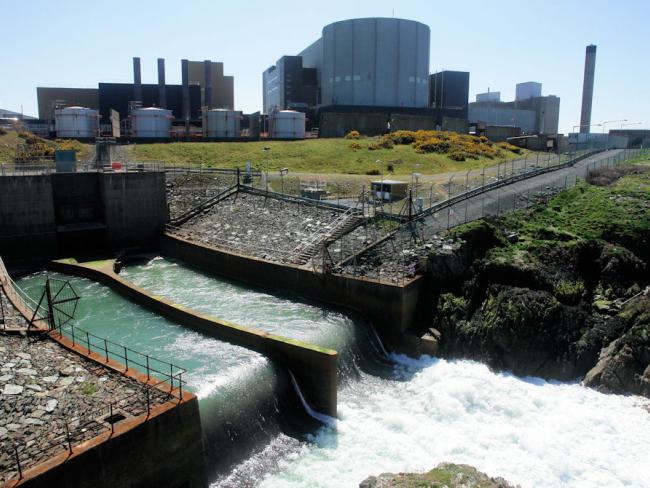27 November 2025

The former nuclear power station, Wylfa, Anglesey, the site planned for Britain’s first SMRs. Photo Talsarnau Times via Wikimedia Commons (CC BY-SA 3.0).
The go ahead to build small nuclear reactors in Wales is a significant and important development, if overdue.
This decision is positive for Britain’s energy supply and manufacturing with Rolls-Royce, world leader in this technology, chosen as the supplier.
Procrastination
Finally on 13th November, after years of procrastination, the government made a decision to build Britain’s first ever small modular nuclear reactors (SMR). The chosen site is Wylfa, on the Isle of Anglesey off the North Wales coast.
Publicly owned Great British Energy-Nuclear will build the reactors, designed by Britain’s Rolls-Royce SMR, subject to final contract,. This decision is to commit to nuclear power will provide a stable and continuous source of generating capacity for the national grid.
Choosing British
The government eventually chose to go with Britain’s Rolls-Royce rather than with a US manufacturer after lengthy procurement. Even when Rolls was announced as preferred bidder in June, there was no certainty it would get the contract.
‘This will lead to jobs in British manufacturing and nuclear energy.’
This move will lead to jobs in British manufacturing as well as nuclear energy. But the risk that the US government and companies will in future try to secure other contracts in Britain can’t be ignored.
Rolls-Royce already has an agreement to build SMRs in Czechia, and has reached the final selection stage to supply SMRs to Sweden.
Wary
Workers in North Wales and beyond will be wary of rejoicing until that final contract has been signed. There was a nuclear powerplant at Wylfa from 1971 until the final reactor was decommissioned in 2015. Since then, the area has suffered deindustrialisation and the loss of many skilled jobs. Promises of re-development have remained unfulfilled.
The decision is part of wider government investment into the economy of North Wales. This includes an investment zone to boost advanced manufacturing, the Anglesey Freeport and essential rail upgrades to the North Wales mainline.
Welcomed
The decision has generally been widely welcomed in the local community including the Plaid Cymru run local council. There will be opposition from those who are hostile to all forms of nuclear energy.
Some people may doubt that local labour will be used. This could be tackled by setting concrete demands for training and job opportunities for local workers and trade unions.
Opportunity
The construction phase starts in 2026, employing as many as 3,000 workers. The decision creates an opportunity for local further education colleges and trade union branches to demand the necessary training for these jobs.
There will be work too at the nuclear plant when completed – for workers who formerly worked in the industry and younger workers keen for skilled work. The SMRs are expected to supply the grid in the mid-2030s. There is time for creating training courses for the specialist technical skills required.
World-leading capability
There are already educational opportunities at nearby Bangor University. The Nuclear Futures Institute there is developing a world-leading capability in nuclear science and engineering, working closely with other areas of British industry and institutions like the Advanced Manufacturing Research Centre in Sheffield.
The initial plan is to install three SMRs at Wylfa but there is capacity for eight on the site. The three reactors will generate enough electricity for three million homes – more than twice the number of homes in Wales.
‘Unite emphasises the need for a coherent energy strategy in Britain.’
Unite the Union has long supported the development of SMRs. It welcomed the decision to invest at Wylfa as “a step forward” but suggests this is a missed opportunity. There are few sites suitable for giga-watt nuclear power stations like Sizewell C or Hinkley Point C. Wylfa is one such location: but at full scale with eight SMRs the site would produce more power than a giga-watt station.
Unite emphasises the need for a coherent energy strategy in Britain to include both types of nuclear installation. With the decision on Wylfa now made, the need now is to ensure the government presses ahead with the adoption of SMR technology, as well as challenging it on the broader energy strategy.
• Earlier this year, Anglo-Italian nuclear power company, Newcleo, dropped plans to build its own SMRs in Britain, citing lack of support from government, particularly refusal to provide plutonium from the Sellafield stockpile (which will now be disposed of rather than used for productive purposes).
